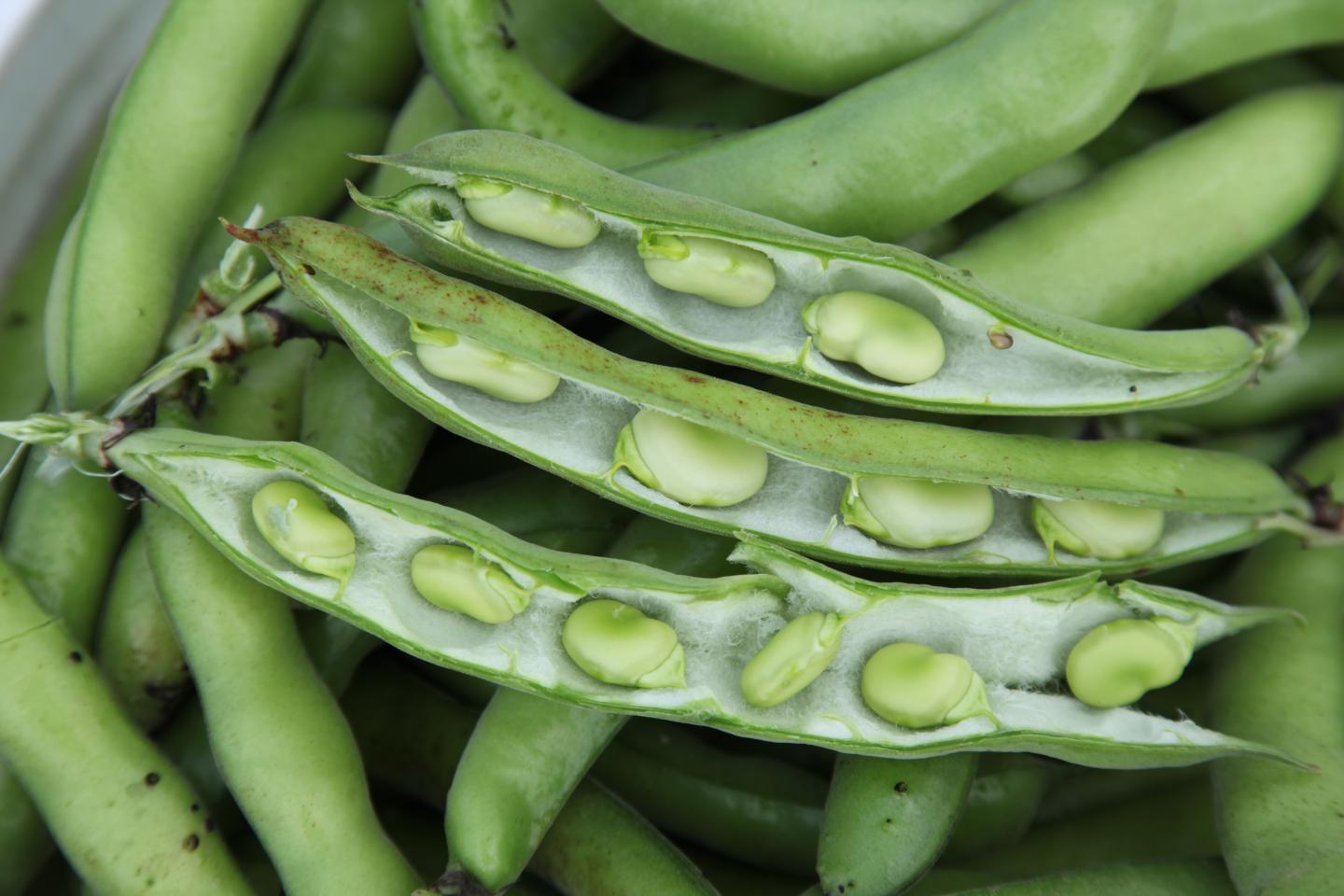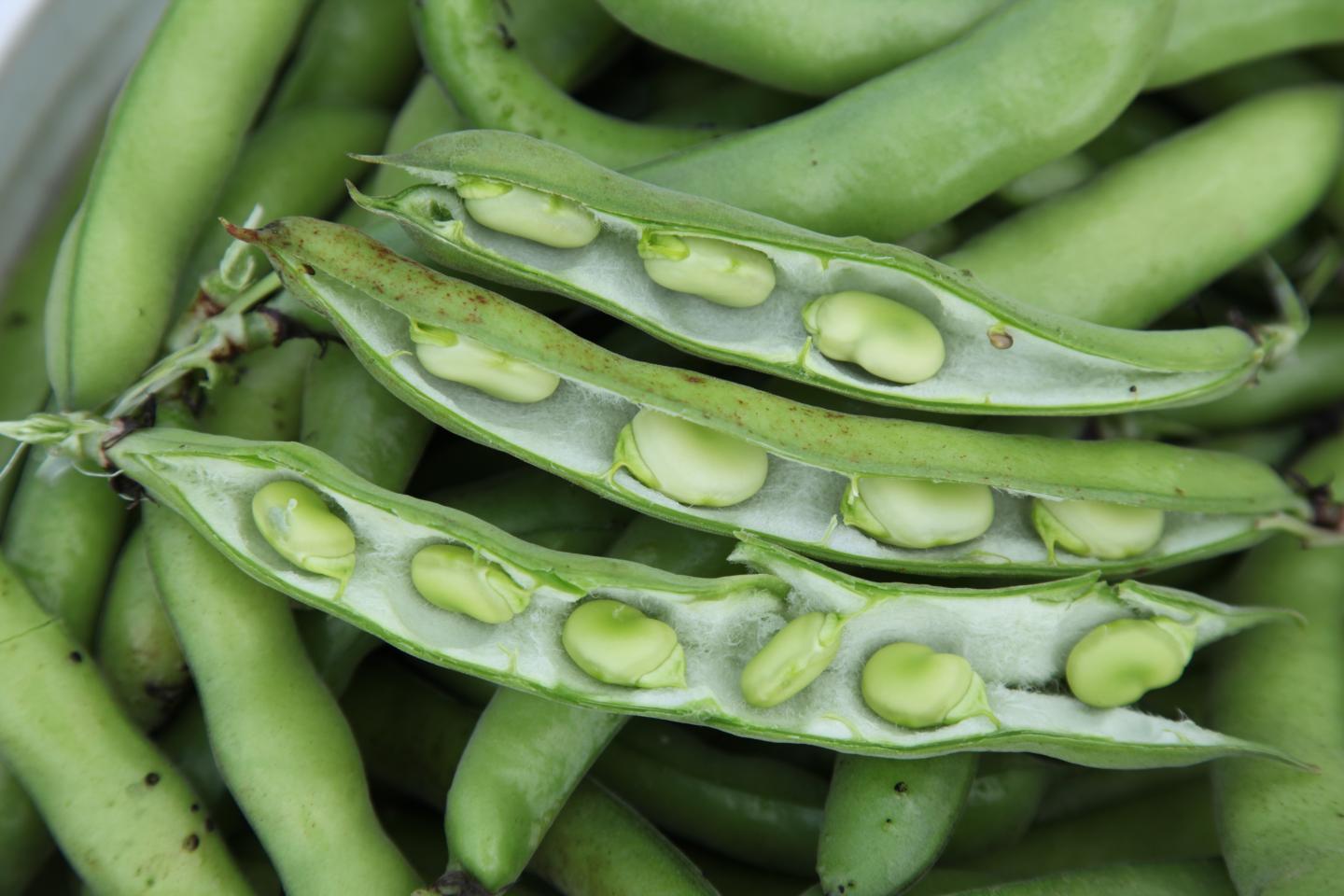
Credit: Masoud Hashemi.
Researchers have good news for growers. Farmers raising a nitrogen-hungry crop like sweet corn may save up to half of their nitrogen fertilizer cost. The key: using a faba bean cover crop.
Faba bean is an ancient crop increasingly used as a cover crop. Cover crops are grown in the months between main crops when the soil would otherwise be bare. Cover crops can control erosion, build soil, and suppress weeds. Grasses, legumes, and other non-grassy plants are the most commonly used cover crops.
Faba is a legume, as are peas, beans, and lentils. They are a good source of protein. They also bring an important benefit to agriculture: they are nitrogen fixers. These plants, working with bacteria in the soil, take nitrogen from the atmosphere. The decomposing plants then and add nitrogen to the soil. Faba is known to be one of the most powerful nitrogen fixers.
Nitrogen is a vital nutrient for plants' growth. Farmers who grow sweet corn typically add nitrogen in the form of commercial fertilizer for best yield.
Masoud Hashemi and colleagues at the University of Massachusetts Amherst tested faba bean as a cover crop before planting sweet corn. They wanted to learn if the nitrogen from the faba bean plants would meet the high nitrogen needs of the sweet corn. They also wondered whether tilling the faba residues into the soil or leaving them to decompose in place would provide more nitrogen for the corn.
This study showed the timing of when faba was planted had a dramatic effect on the biomass–the total weight–the plants produced before winter weather stopped growth. More biomass means more nitrogen. Faba beans planted on August 1 had more than twice the biomass of faba beans planted just two weeks later.
Not surprisingly, the sweet corn planted the following spring produced much better yields when it was planted in the earliest-sown faba compared to later-sown faba. The amount of nitrogen legumes can add to the soil is closely tied to the amount of biomass they produce.
The sweet corn yields were also significantly higher in the plots where the plant residue was left on the surface (no-till). Tilled residues decomposed quicker than the no-till, providing their nitrogen sooner. This proved to be too soon for the sweet corn. The no-till treatment slowed the decomposition of the faba bean residues. A delayed release of nitrogen into the soil better matched the needs of the young sweet corn.
Even so, the faba bean residues alone did not provide enough nitrogen for the best sweet corn yields. Additional nitrogen was needed. However, only about half as much was needed compared to corn grown without a faba bean cover crop.
"Faba bean cover crops can add a large amount of nitrogen to the soil," Hashemi concluded. "But to make the most of its potential, especially if harvesting some fresh pods is expected, faba bean has to be planted as early as possible after harvesting the summer crop. Moreover, to contribute best to the nitrogen needs of the spring crop, the residues should not be tilled into the soil and must be left on the soil surface."
###
Read more about this research in Agronomy Journal. The research project was supported through grants awarded by Northeast Sustainable Agriculture and Research (SARE) and Massachusetts Department of Agriculture.
Media Contact
Susan Fisk
[email protected]
608-273-8091
@ASA_CSSA_SSSA
http://www.agronomy.org
Related Journal Article
http://dx.doi.org/10.2134/agronj2017.08.0501





